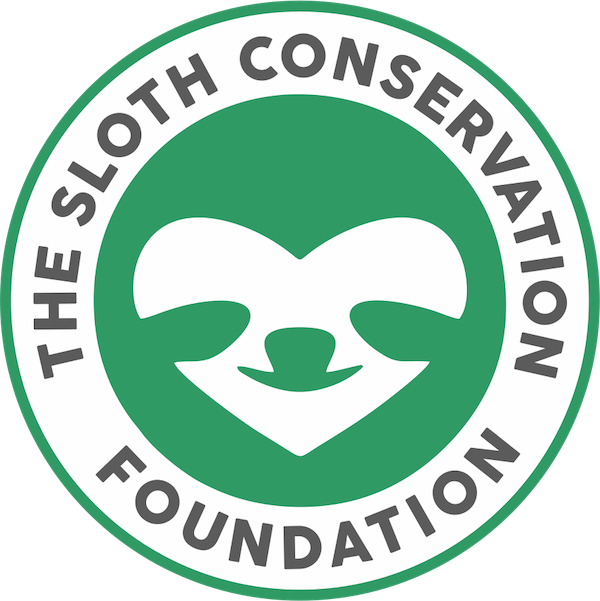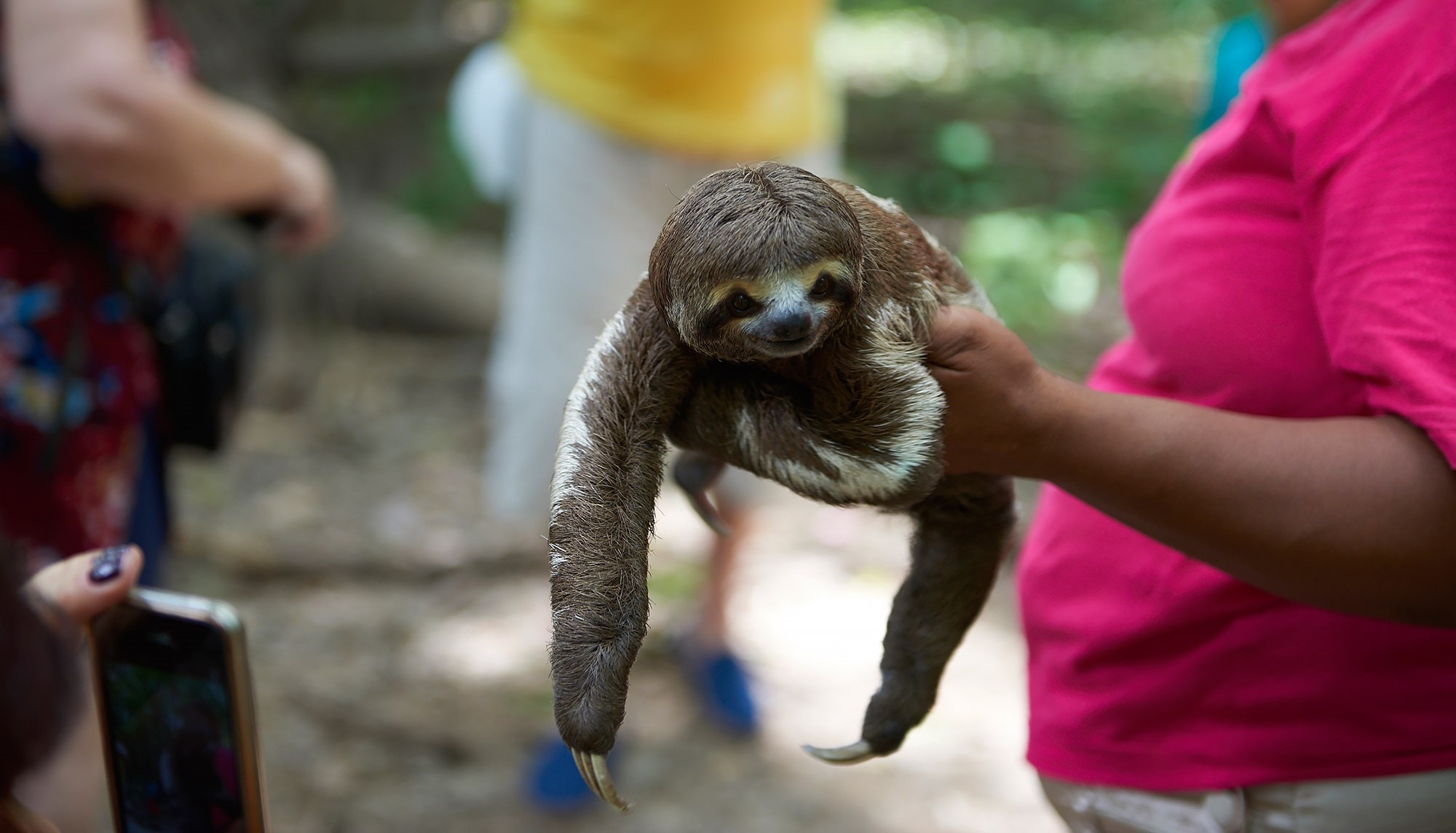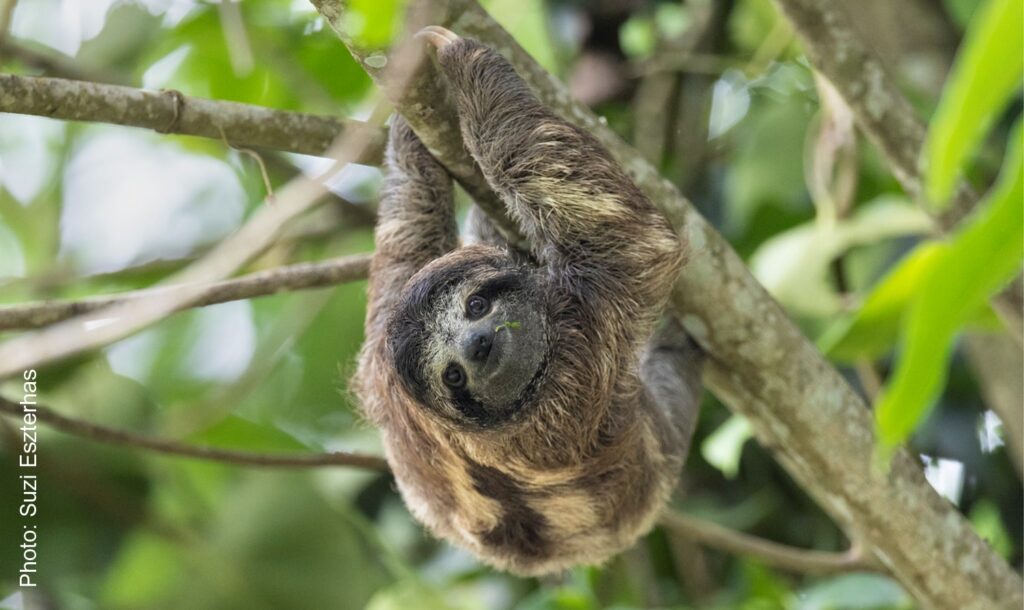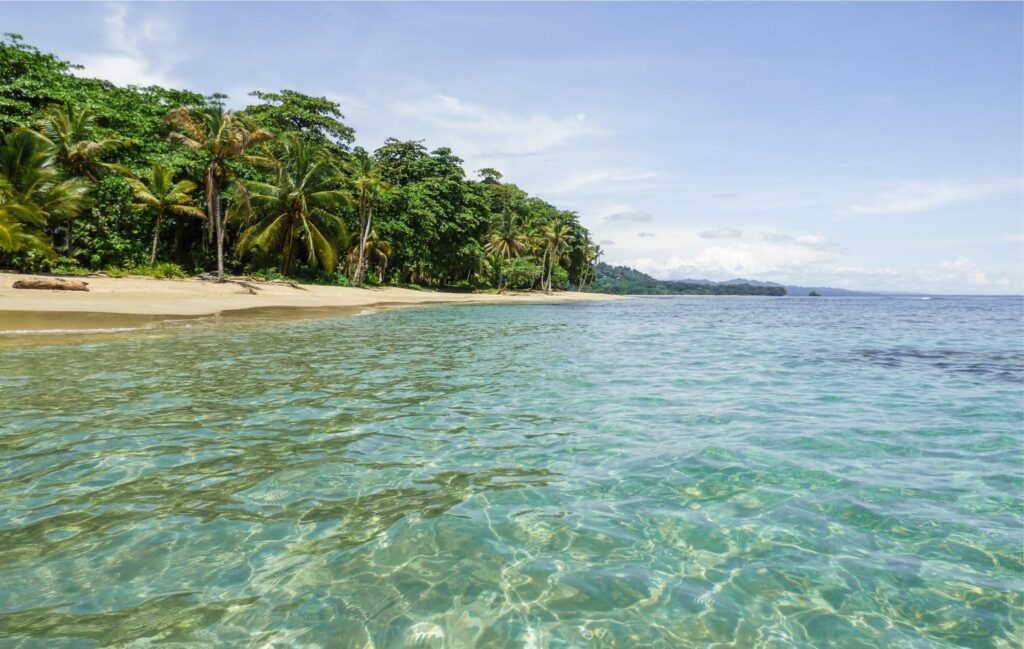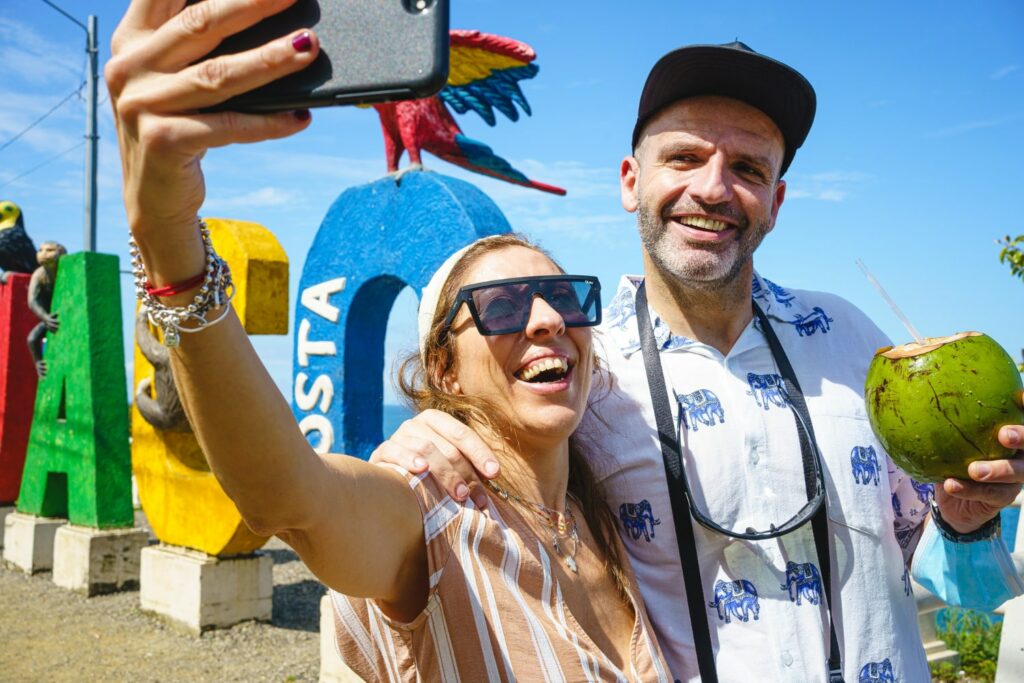The Wildlife Selfie Problem
Animals all over the world are being exploited for hands-on wildlife encounters. We might think that a photo of us riding an elephant, swimming with a dolphin – or holding a sloth – will impress our friends and family. It will make everyone on our social media feed jealous. But at what cost? Some people do it for the experience rather than the wildlife selfie. We all want to know what it is like to feed a tiger cub or cuddle a monkey. We are tactile creatures and it is human nature to want to touch and pet animals.
Most people simply do not know the dark truth behind the animal encounter that they are experiencing. If they did, they certainly wouldn’t support it. That is why we are writing this blog. We want to raise awareness and to help people make better informed and ethical decisions in the future.
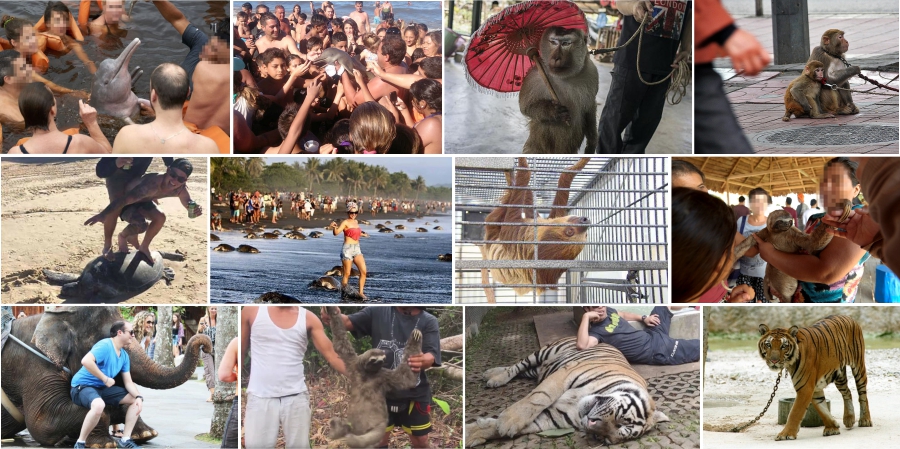
There are 2 very real and very big problems with ALL human-wildlife encounters (and by wildlife we mean any species of wild animal anywhere in the world – even if it lives in a captive setting like a zoo, sanctuary, a house or a rescue facility):
#1. The impact on the animal
We won’t go into this in too much detail as it differs widely by species and circumstance. A quick google search will reveal the extent of the abuse that each animal species suffers for a hands-on encounter or wildlife selfie. The people offering these encounter opportunities will tell you anything that you want to hear about why that animal is there and how it loves human contact. In the case of sloths, they always use a variation of the same theme:
“The sloth was rescued and is being cared for! Because it has been raised by / spent time with humans it likes human contact“
This global excuse is used by rescue facilities as well as individuals and indigenous communities (with Honduras and Peru being major hot spots). They can be very convincing with the story, so watch out. Regardless of whether the animal was rescued or taken from the wild purposefully, we can tell you with 100% certainty that any form of direct human contact is damaging to the health of ALL sloths.
It has been scientifically proven that the mere approach of a human causes sloths to experience abnormal blood pressure reactions. These animals will often tolerate handling without struggling but it is stressful for them. Don’t let their placid nature and naturally happy facial expressions fool you. Sloths internalize all stress. Any reputable organisation that has a sloth will make sure that all visitors keep an absolute minimum distance of 2 meters away from the sloth.
The Ugly Picture
Always remember that you are NOT the only person receiving this opportunity. The animal in question will be offered to tens, if not hundreds, of people every single day. Here is just one example. The images below are a small selection retrieved from Instagram and TripAdvisor posts (within the last 2 months) from a center in Honduras. You can see that it is the exact same sloth being used in every photo – she has a very distinctive facial hair pattern.
This sloth is being passed around from person to person every single day. Cruise ships full of tourists on vacation visit this center and every single person wants to hold the sloth and have a picture taken. If you want to help us end the abuse, please send an email to the people responsible and ask them to stop allowing this to happen to the sloths in their care. You can also contact Carnival Cruises and ask them to stop facilitating the abuse of wildlife by offering this excursion
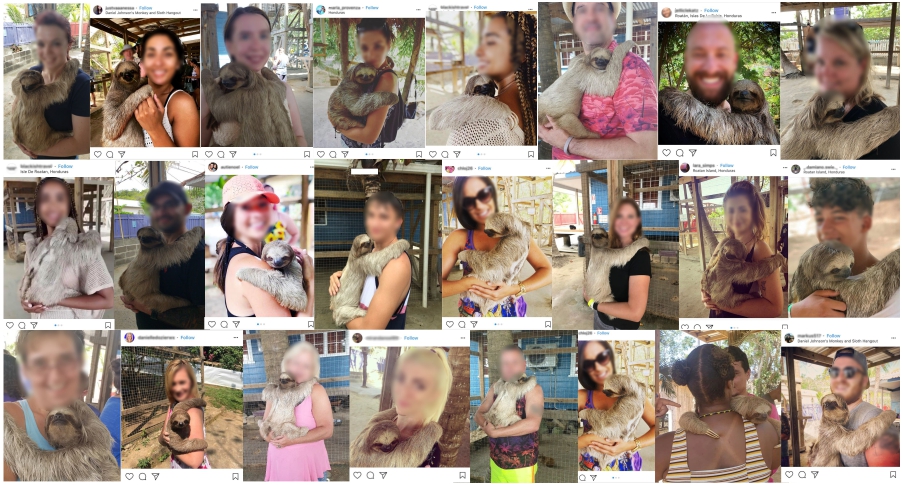
You don’t need to be touching the animal to cause stress.
Perhaps the sloth is wild and you see it crossing the road or hanging on a low-down branch? You think you can sneak in next to it and get the perfect selfie. Maybe if you touch it with a stick, shake the tree or make a noise then it will look at the camera? Since you aren’t actually holding the sloth is it OK? No. This is also unpleasant for the animal and sloths have been known to have miscarriages from the stress of these encounters. All of the sloths in these images with their arms raised are showing extreme signs of stress. Raising an arm like this makes the sloth look bigger which is a last-resort tactic when under attack.

#2 Photos on social media ‘normalize’ human-wildlife contact
70% of all sloth photos on social media show people holding, touching or using them as photo-prop accessories. Just make a quick Instagram search for #sloth or #slothselfie and you will see the extent of the problem for yourself. Unfortunately it is not just limited to sloths. Social media is flooded with photos of people interacting with wild animals in inappropriate ways. From feeding, petting and posing to riding, swimming and dancing.
Seeing these images every day ‘normalizes’ the behaviour. If someone is offered the opportunity to hold a sloth or ride an elephant then they think “well I have seen other people doing it so it must be OK”. It isn’t OK. It is an abusive epidemic and the only solution is to raise awareness and boycott the organisations and people who permit it.
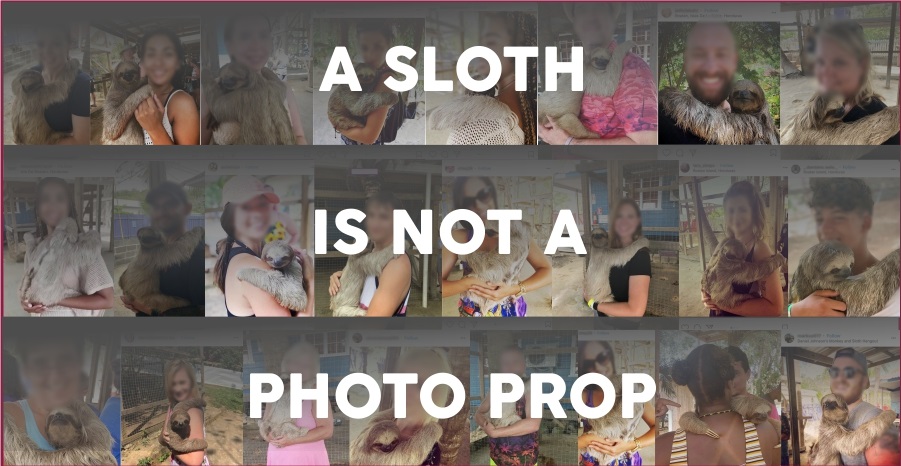
Changing the Future
When we first started working with sloths 11 years ago, nobody knew the damaging effect that human contact had on these animals. We certainly didn’t realize how photos showing people holding or touching sloths could contribute to the wildlife selfie crisis that we see today. We live and we learn. Now that you are reading this article you can be fully aware moving forwards and perhaps you can make the conscious decision to edit your social media history accordingly (as we have all tried to do here at SloCo). The fewer images that are publicly out there that encourage the handling of wildlife the better!
This message also applies to celebrities and social media influencers who have a huge role to play in determining what people believe to be ‘acceptable’. Sloths being brought onto TV shows for the host to hug simply should not be happening. There is also a startling new craze for ‘sloth yoga‘ and ‘sloth swimming lessons‘, with sloths being paraded around yoga studios and dumped in swimming pools in the United States. Clearly someone is benefiting from that arrangement and it certainly isn’t the sloth. As tempting as it might seem to attend an event like that, please don’t!

Are there any exceptions?
Zookeepers, rescue center workers, biologists, veterinarians, scientists and conservationists may have good reason to have contact with wild animals. However it is not a good idea to post images of this on social media. A photo that shows work being carried out – an animal being rescued / released or undergoing a medical procedure, for example – would be OK. However, if it is a photo where you are posing with or holding the animal without a clear purpose then this crosses the blurry line of becoming a wildlife selfie and could possibly portray the wrong message.
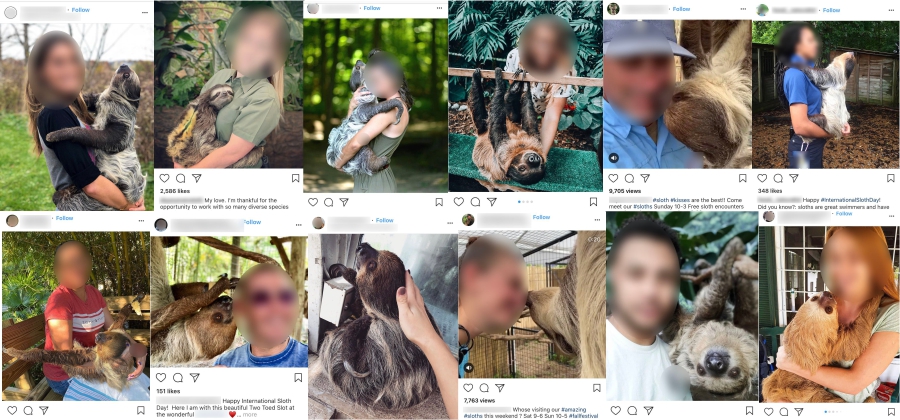
The Ultimate Sloth Selfie Code:

1. Give the sloth lots of space!
If the distance between you and the sloth is less than 2 meters (including your arm and/or selfie stick) – back away and give the sloth some extra space!
2. Take photos without the flash of your camera
Sloths have very sensitive eyes to light. A bright camera flash can be scary and dangerous!
3. Make slow movements and keep the volume down
Sudden movements and loud noises will startle the sloth. Not only is this stressful for the sloth, but it will ruin your photos as the sloths response will likely be to freeze and hide it’s face.
4. Please never pet, hold or touch a sloth.
If someone ever offers you this opportunity then you can help us to prevent it from happening in the future by reporting the person / organisation to us (info@slothconservation.com) and the local authorities.
5. Keep it off social media
If you do have a photo that shows you holding a sloth that is not obviously for professional purposes – delete it from social media and help us to kill the growing demand for sloth selfies.
